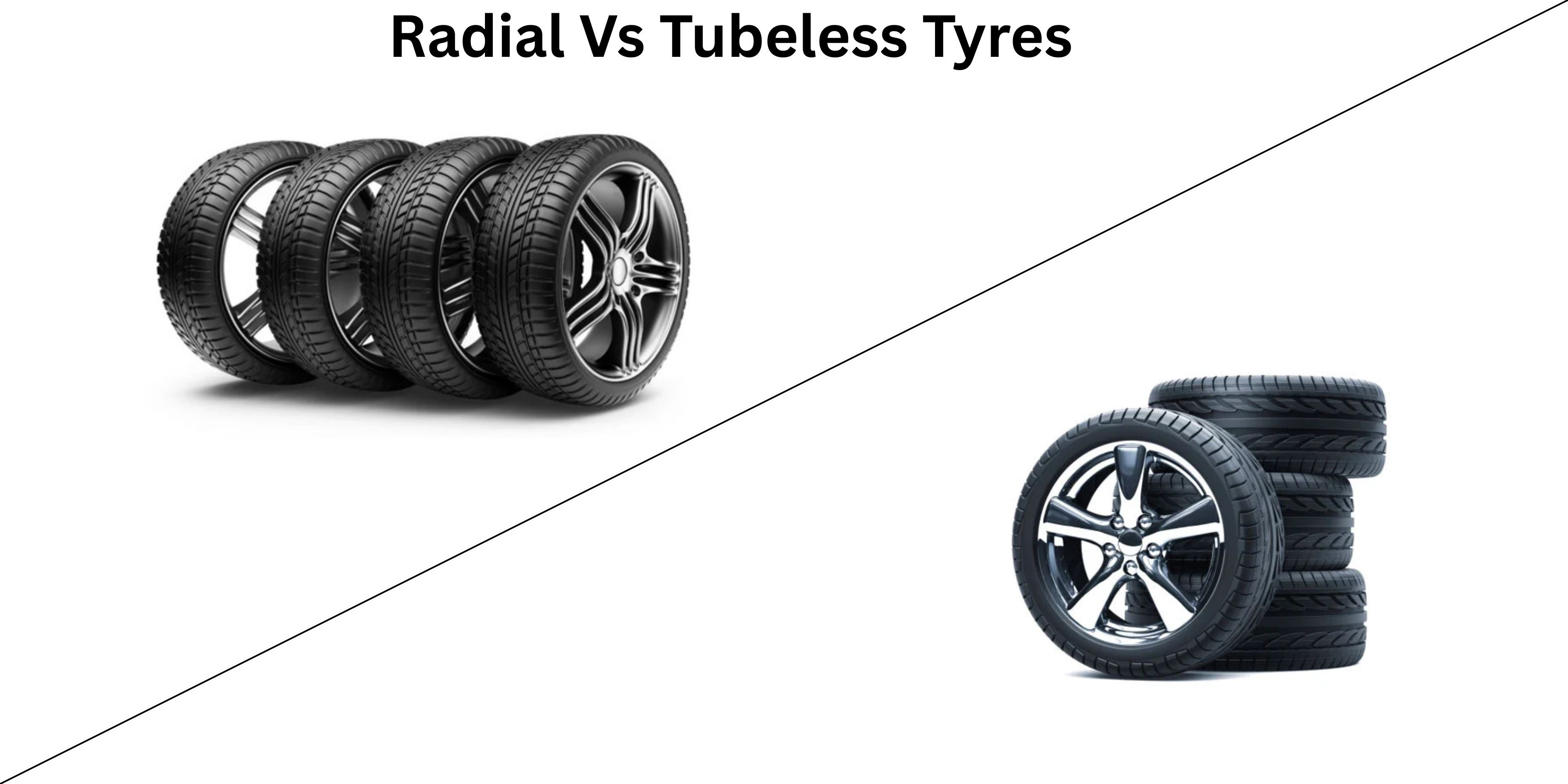
Introduction
When it comes to
choosing the right tyres for your vehicle, understanding the differences
between radial tyres and tubeless tyres is
crucial. Both have unique advantages, and selecting the best option depends on
your driving needs, vehicle type, and road conditions.
In this blog post,
we’ll break down the differences between radial and tubeless tyres in a comparative
table, discuss their pros and cons, and provide essential tips and
tricks to help you make an informed decision.
Understanding
Radial Tyres
Radial tyres are
constructed with layers of fabric (usually polyester or steel) running
perpendicular (radially) to the direction of travel. This design provides
better flexibility, improved fuel efficiency, and a smoother ride.
Advantages of
Radial Tyres:
✔ Better grip and stability at high speeds
✔ Reduced rolling resistance, improving fuel efficiency
✔ Longer tread life due to even wear
✔ Comfortable ride due to flexible sidewalls
Disadvantages of
Radial Tyres:
✖ More expensive than bias-ply tyres
✖ Sidewalls are more vulnerable to damage
Understanding
Tubeless Tyres
Tubeless tyres, as the
name suggests, do not require an inner tube. Instead, they have an airtight
seal with the rim, reducing the risk of sudden air loss.
Advantages of
Tubeless Tyres:
✔ Lower risk of sudden blowouts (air escapes
slowly if punctured)
✔ Better heat dissipation, reducing overheating risks
✔ Lighter weight, improving fuel efficiency
✔ Easier to repair (can often be fixed with a plug)
Disadvantages of
Tubeless Tyres:
✖ Difficult to repair if the sidewall is damaged
✖ More expensive than tube-type tyres
✖ Requires a perfectly sealed rim for proper functioning
Radial Tyres vs.
Tubeless Tyres: Key Differences (Tabular Format)
|
Feature |
Radial Tyres |
Tubeless Tyres |
|
Construction |
Layers run
perpendicular to travel direction |
No inner tube;
airtight seal with rim |
|
Puncture Safety |
Risk of sudden
deflation if tube is punctured |
Air escapes slowly,
reducing blowout risk |
|
Ride Comfort |
Smoother due to
flexible sidewalls |
Comfortable but
depends on tyre pressure |
|
Heat Dissipation |
Better than bias-ply
but less than tubeless |
Excellent heat
dissipation |
|
Repair Difficulty |
Requires tube
replacement if punctured |
Can be plugged in
most cases |
|
Weight |
Heavier due to
multiple layers |
Lighter, improving
fuel efficiency |
|
Cost |
More expensive than
bias-ply tyres |
More expensive than
tube-type tyres |
|
Best For |
High-speed driving,
long-distance travel |
Everyday commuting,
off-roading |
Which One Should
You Choose?
Choose Radial Tyres
If:
✅ You prioritize fuel efficiency and long tread
life
✅ You frequently drive at high speeds
✅ You want a smoother and more stable ride
Choose Tubeless
Tyres If:
✅ Safety against sudden punctures is a priority
✅ You prefer easy puncture repairs
✅ You drive in varied road conditions
Tips and Tricks for
Maintaining Radial and Tubeless Tyres
1. Check Tyre
Pressure Regularly
- Underinflated tyres increase fuel
consumption and wear out faster.
- Overinflated tyres reduce grip and
comfort.
- Use a digital pressure gauge for
accurate readings.
2. Rotate Tyres
Every 5,000-8,000 km
- Ensures even wear, extending tyre life.
- Front tyres wear faster due to steering
forces.
3. Inspect for
Damage and Punctures
- For tubeless tyres, listen for
hissing sounds (indicates air leakage).
- For radial tyres, check the
inner tube for slow leaks.
4. Avoid
Overloading Your Vehicle
- Excess weight increases tyre stress,
leading to blowouts.
5. Use Sealants for
Tubeless Tyres (Preventive Measure)
- Sealants can automatically fix small
punctures.
- Useful for off-road and long-distance
driving.
6. Align and
Balance Wheels Annually
- Misalignment causes uneven wear and
reduces tyre lifespan.
7. Store Spare
Tyres Properly
- Keep them in a cool, dry place away
from sunlight.
- Store vertically to prevent deformation.
Common Myths About
Radial and Tubeless Tyres
❌ Myth 1: Tubeless Tyres Never Go Flat
- While they are more puncture-resistant,
they can still lose air if damaged severely.
❌ Myth 2: Radial Tyres Are Only for
Premium Cars
- Many budget and mid-range vehicles now
come with radial tyres due to their efficiency.
❌ Myth 3: Tubeless Tyres Cannot Be
Repaired
- Small punctures can be fixed with a plug
or patch without replacing the tyre.
Final Verdict:
Which is Better?
There’s no
one-size-fits-all answer—both radial and tubeless tyres have their strengths.
- For performance and fuel efficiency → Radial Tyres
- For safety and puncture resistance → Tubeless Tyres
If your vehicle
supports it, you can even opt for radial tubeless tyres, combining
the benefits of both technologies.
Conclusion
Choosing between
radial and tubeless tyres depends on your driving habits, budget, and safety
preferences. Radial tyres excel in performance and durability,
while tubeless tyres offer better puncture protection.
By following the maintenance
tips mentioned above, you can extend the lifespan of your tyres and
ensure a safer, smoother ride. Always consult a tyre expert before
making a final decision based on your vehicle’s requirements.
Did you find this
guide helpful? Let us know in the comments which type of tyre you prefer and
why! 🚗💨


